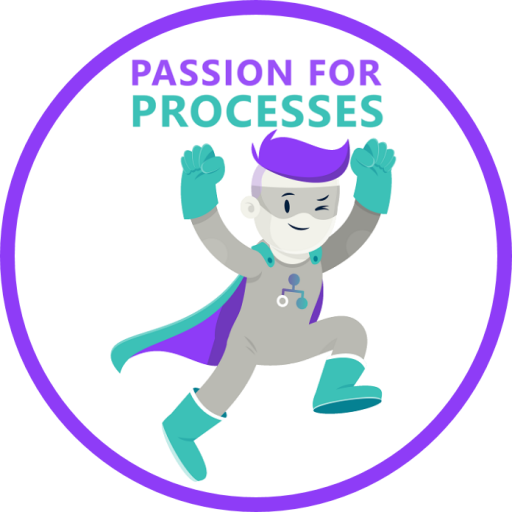Hi,
I'm working on a BPMN project for my academy
I cannot resolve an issue: in the process I am analyzing it is necessary to represent istances that are carried out by different actors. The process ends when all the instances have been consumed by the various actors that are part of it.
How can I represent in BPMN this multi-instance actvities that are carried out by multiple actors??
I thought of a sort of multi-instances activies that would include different pools/lanes, but ARIS Express won't let me do it.
I am sending as an attachment the set of activities that I would like to include under a multi-instances.
Can anyone tell me how to solve this problem?
Thank you for your help
Hi Vito,
I am not quite sure whether I fully understand your case (I am not familiar with Italian). I guess it is a budget approval process. Who are the actors? Specific persons or roles? Is the number defined? All should follow the same process flow?
Let's assume three actors.
May be you can encapsulate the process flow in a call activity with the defined pools and lanes. You start your main process with an instantiating parallel eventbased gateway with three message events that represents the actors starting their activities. After the events the above defined call activity follows. So you have three sequence flows with three parallel call activities. The three outgoing sequence flows come together in a merging parallel gateway with an end event at the outgoing side. That's my idea. May be I fully misunderstood you, then please correct me.
Regards
Klemens
Hi Klemens, thanks for your support.
It's possible in BPMN to create a call activity that involves multiple actors? So I should create collapsed call activities and then create the expanded one in which I insert the various pools of the different actors.
Did I get it right?
Hi Vito,
I think there is still a misunderstanding between us.
In BPMN you can add the attribute "multi- instance parallel loop" to elements like tasks, subprocesses or call activities (graphically shown by three vertical lines at the bottom of the symbol of the element). You can add a text annotation to describe the parallel behaviour of the element (saying e.g. call activity will be initiated three times by actor1, actor2, actor3). In the call activity you modell a general lane for the actor (expanding or collapsing does only show the content of a subprocess/call activity or not). This modelling technique does not include any dependencies between the three actors. This is what I proposed in my first posting.
What is the problem with the modell you published in your first posting? The only thing you should observe that each branch must be ended by an end event.
Btw. ARIS Express has a full implementation of the BPMN 2.02 specification.
Regards
Klemens
Dear Klemens,
Thanks again for the support you are giving me!!
I will try to clarify my request as much as possible.
I isolated from BPMN the process steps that make up an instance.
I need to highlight the fact that the set of all these activities must be repeated for a number equal to the number of instances.
How can I represent this?
I think it's really essential to be able to finish my project.
I am attaching the BPMN in which only the request involving the various actors appears.
I've highlighted where the instance starts and where it ends.
I hope in your answer.
Best regards.
Hi Vito,
besides I already commented in my posts before I fear that I cannot help you further in your specific case. Maybe some general remarks:
- An instance is a pass through a process following specific branches of the sequence flow of the process. It depends on the business case. Different business cases lead to different instances.
- The task for the modeler is to design and model the process so that all relevant business cases are covered.
- A pass throuh a process starts at one or more start events and finishes at one or more end events (or you model without start/end events...but forget this option). A pass through can be simulated by a token that runs through a process and represents the specific business case. Tokens can be multiplied (at converging parallel gateways or inclusive gateways or at non interrupting attached boundary events) and consumed at merging gateways.
- A process within a pool or within a sub-process must have a continuous sequence flow from start to end (that is what is wrong in your model). A process cannot go beyond pool borders. Message flows are NO sequence flows, they represent messages.
All the best for project.
Regards
Klemens






